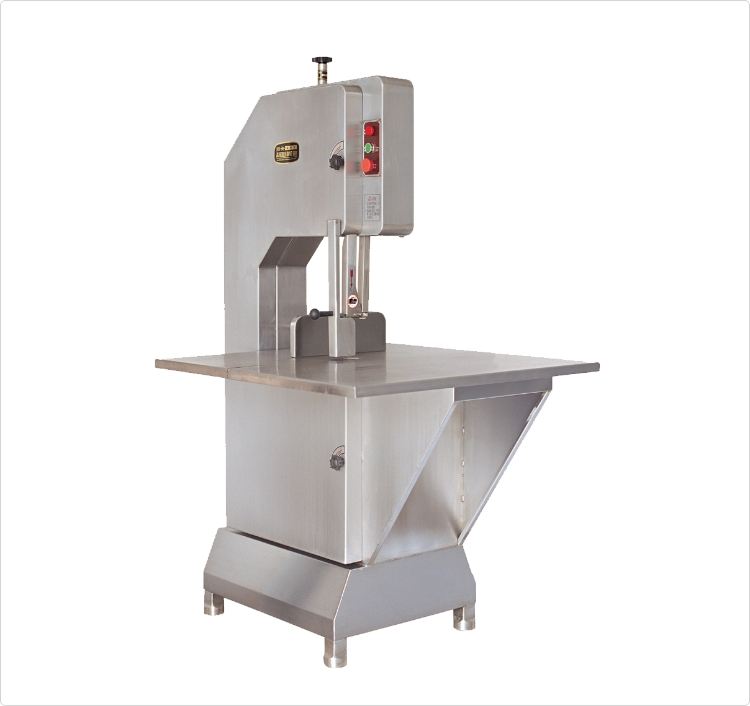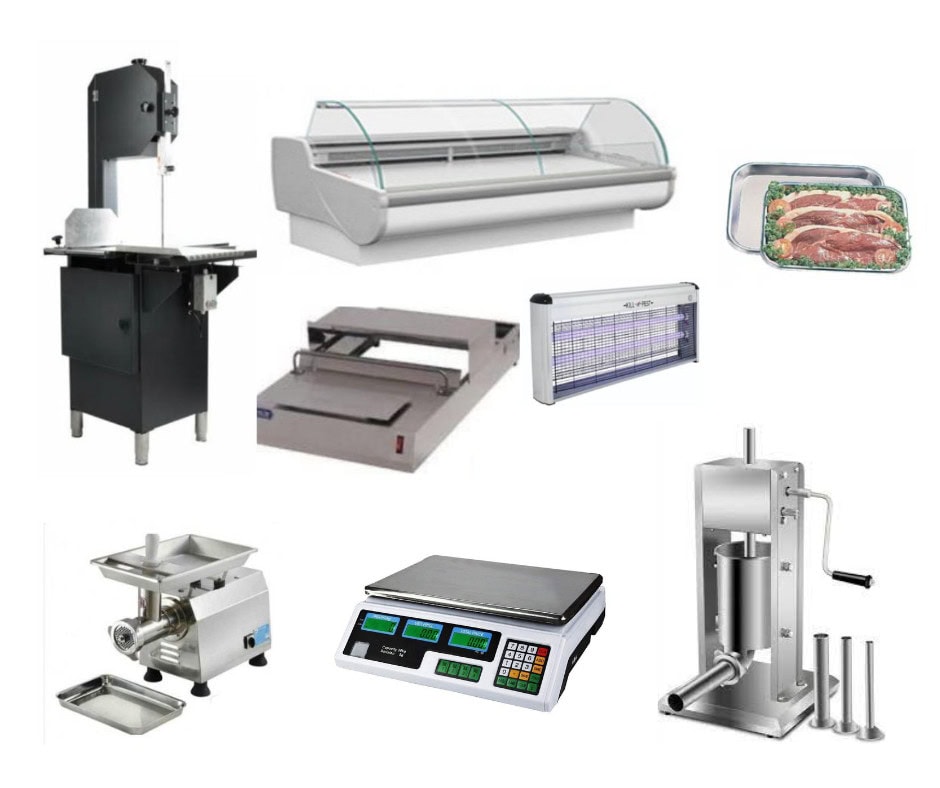Butchery Equipment: What Every Cook Should Have in Their Setup
The Ultimate Overview to Maintaining Your Butchery Tools for Long Life
Preserving butchery tools is important for ensuring safety and performance in meat processing. Routine upkeep not just enhances productivity but also reduces the risk of crashes. From everyday cleansing regimens to specialist servicing, every facet plays an essential role in devices durability. Recognizing these methods can considerably impact the operational success of a butchery. What steps should one focus on to accomplish excellent performance and safety?
Comprehending the Value of Tools Upkeep
Although often forgotten, the maintenance of butchery devices is crucial for assuring both safety and performance in the meat handling industry. Normal examinations and maintenance of blades, saws, and grinders are essential to prevent crashes and guarantee peak efficiency. Boring blades can result in greater force being used, increasing the threat of slides and injuries. Furthermore, well-maintained tools operates a lot more efficiently, lowering waste and enhancing productivity.Neglecting maintenance can cause pricey repairs or replacements, which affect a company's profits. By sticking to a scheduled maintenance plan, butchers can expand the life expectancy of their devices and machinery. This positive technique not just ensures conformity with wellness and safety and security regulations however also cultivates a workplace concentrated on top quality and accuracy. Inevitably, understanding the relevance of equipment maintenance is necessary for any butchery aiming to flourish in a competitive market while prioritizing the wellness of workers and consumers alike.
Daily Cleansing and Sanitization Practices
Maintaining a clean and sanitized workspace is important for butchers, as it directly affects food safety and security and high quality. Daily cleaning techniques need to start with the removal of any food particles and deposits from all surface areas, including cutting boards, kitchen counters, and tools. Butchers need to make use of ideal cleansing representatives that successfully get rid of bacteria while being safe for food-contact surfaces.After cleansing, complete sanitization is essential. This entails applying a food-safe sanitizer to all surface areas, allowing ample get in touch with time to ensure efficacy. Butchers must additionally focus on devices, tools, and equipment, ensuring they are washed, rinsed, and sanitized after each use.In enhancement, correct handwashing practices need to be adhered to, as hand hygiene is considerable in preventing cross-contamination. By applying these daily cleansing and sanitization methods, butchers can maintain a safe and effective job setting, inevitably boosting the general quality of their products.
Developing and Sharpening Your Knives
Sharpening and refining knives is an important ability for butchers, as sharp devices boost performance and accuracy in cutting. Routine upkeep of knives not just improves performance yet also guarantees safety throughout cooking. Butchers should comprehend the difference in between developing and honing; sharpening eliminates material to restore the blade's edge, while honing lines up the side for peak cutting.To hone knives, utilizing a whetstone or professional sharpening service is advised. It is important to keep the correct angle during developing to attain a consistent side. Developing can be finished with a honing steel, which should be utilized frequently to maintain knives in prime condition.Butchers must likewise be aware of the product of their blades, as various types call for details care techniques. A well-maintained blade will certainly bring about much less exhaustion and much better end results, making sharpening and honing a crucial part of butchery equipment care.
Evaluating and Preserving Saws and Mills
Regular examination and maintenance of saws and mills is crucial for assuring peak efficiency and longevity of butchery tools. Operators must consistently check saw blades for wear and damage, looking for nicks or dullness that can influence reducing performance. Cleaning up the blades after each use helps protect against accumulation and rust, improving their lifespan.Grinders likewise require focus; drivers should inspect grinding plates and knives for signs of wear or imbalance. Routinely lubing moving components guarantees smooth operation and reduces prospective failures. It is vital to tighten up all screws and screws to prevent vibrations that can result in mechanical failure.Additionally, inspecting electrical connections and cables for fraying or damage is essential for safety and security. By sticking to an aggressive maintenance schedule, butchers can decrease downtime and extend the life of their saws and grinders, ultimately supporting an extra efficient and productive workplace.
Appropriate Storage Space Methods for Butchery Tools
Appropriate storage methods for butchery tools are crucial for maintaining their functionality and safety after maintenance jobs have actually been finished. Proper company decreases the threat of damage and warranties that devices are conveniently offered when required. It is a good idea to save knives in safety sheaths or magnetic strips to avoid dulling and mishaps. Reducing boards must be cleaned and stored upright to enable air flow, avoiding dampness buildup.Saws and grinders should be maintained in assigned storage space areas, preferably in visit this site a completely dry, temperature-controlled setting to stay clear of rust. Tool shelfs can supply easy access while maintaining tools off surfaces, minimizing mess. Additionally, regular examine saved devices for indications of wear or damages will assist maintain their problem. By applying these storage methods, butchers can prolong the life of their equipment and guarantee a safe functioning atmosphere.
Scheduling Routine Specialist Maintenance
Scheduling normal professional maintenance is important for keeping the effectiveness and long life of butchery tools. Specialists recommend that servicing be performed a minimum of annually, though even more constant checks may be essential based upon usage degrees. This aggressive technique assists avoid pricey failures and guarantees compliance with health and wellness standards.
Relevance of Specialist Maintenance
While the longevity and effectiveness of butchery devices are necessary for operational success, many services overlook the requirement of expert upkeep. Regular expert maintenance plays a crucial duty in making sure that tools operates at peak performance. Specialists possess specialized expertise and abilities, allowing them to determine issues that might not show up during routine checks. This positive approach not just avoids unanticipated malfunctions yet additionally expands the life expectancy of pricey equipment. Additionally, specialist maintenance assists preserve conformity with health and wellness guidelines, protecting both staff members and customers. By investing in professional maintenance, butchers can enhance productivity, decrease fixing expenses, and cultivate a safer working atmosphere, ultimately adding to the overall success and online reputation of their service.
Advised Servicing Frequency
Developing a routine servicing routine for butchery tools is crucial for keeping peak performance and dependability. Generally, butchers must go for professional servicing every six to twelve months, depending upon equipment usage and work. High-volume procedures might call for more frequent checks, while smaller facilities can stick to the much longer interval.Regular servicing assists recognize possible concerns before they rise, making certain safety and security and operational effectiveness. It is advisable to speak with supplier guidelines for specific referrals relating to each tool. Additionally, keeping in-depth documents of maintenance dates and executed tasks can help in monitoring equipment health and wellness and planning future upkeep. By sticking to an advised maintenance regularity, butchers can greatly boost the longevity and efficiency of their devices.
Acknowledging Indicators of Deterioration
Acknowledging indicators of damage in butchery equipment is necessary for maintaining peak efficiency. By using aesthetic evaluation strategies, drivers can recognize prospective problems prior to they escalate. Additionally, keeping in mind any type of performance anomalies can educate necessary adjustments to the routine upkeep timetable.
Aesthetic Assessment Techniques
Visual examination acts as an essential first line of protection in recognizing deterioration on butchery tools. Regularly checking out devices and machinery enables operators to detect prospective issues before they rise. Trick locations to concentrate on include blades, joints, and surface areas for signs of rust, monotony, or cracks. Evaluating deals with and holds guarantees they are safe and without damage, which can jeopardize security. Additionally, taking a look at electrical components for tearing website link cables or loose links is vital. A comprehensive aesthetic assessment needs to be conducted regularly, preferably after each usage, to maintain peak functionality and extend the life of the devices. By being attentive, butchers can ensure their devices remain in prime condition and secure their operational performance.
Performance Anomalies
Several subtle efficiency anomalies can suggest wear and tear on butchery tools, which might compromise effectiveness and safety and security. A noticeable decline in reducing sharpness can signal that blades are boring and require interest. Devices might additionally show uncommon resonances or sounds, recommending misalignment or inner damages that can influence performance. Additionally, inconsistent meat structure or irregular cuts may indicate that equipment is not operating at its ideal. Raised operational temperatures can indicate overheating electric motors or rubbing in between parts, risking potential failure. Routinely monitoring these indicators is crucial, as they can bring about more considerable problems if left unaddressed. Prompt acknowledgment of these abnormalities is important for maintaining capability and guaranteeing a secure functioning setting in butchery procedures
Normal Upkeep Arrange
Developing a regular maintenance schedule is essential for recognizing indicators of wear and tear on butchery devices, as positive care can stop pricey repair work and guarantee peak efficiency. Normal inspections should be performed to look for concerns such as dull blades, loosened installations, or unusual sounds. Setting up upkeep tasks, such as honing blades or lubing relocating components, assurances that equipment remains in prime problem. Keeping an upkeep log can aid track the frequency of service and the details jobs done. In addition, being alert to equipment performance throughout daily procedures read more can signal drivers to potential troubles before they rise. By focusing on an organized upkeep routine, butchers can extend the life-span of their equipment and preserve performance in their procedures.
Regularly Asked Inquiries
Exactly how Often Should I Change My Butchery Devices?
The regularity of changing butchery devices differs based upon usage and upkeep. Typically, knives may require replacement every year, while bigger devices can last several years, necessitating normal evaluations to identify when replacement is crucial for peak efficiency.
Can I Use Home Cleaners on My Butchery Devices?

What Are the most effective Materials for Butcher Knives?
The very best products for butcher blades commonly include high-carbon stainless-steel for sturdiness, edge retention, and corrosion resistance. Other options consist of ceramic for light-weight usage and Damascus steel for aesthetic appeal and strength.
Is It Essential to Oil My Meat Saw?

Exactly How Can I Prevent Corrosion on My Tools?
To avoid rust on equipment, routine cleaning is important. Applying a slim layer of oil after usage develops a safety obstacle (Butchery Equipment). Additionally, saving devices in a completely dry environment helps reduce dampness exposure and minimizes corrosion formation